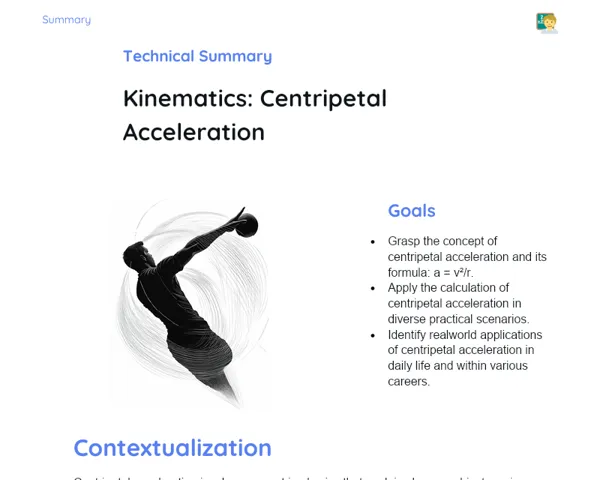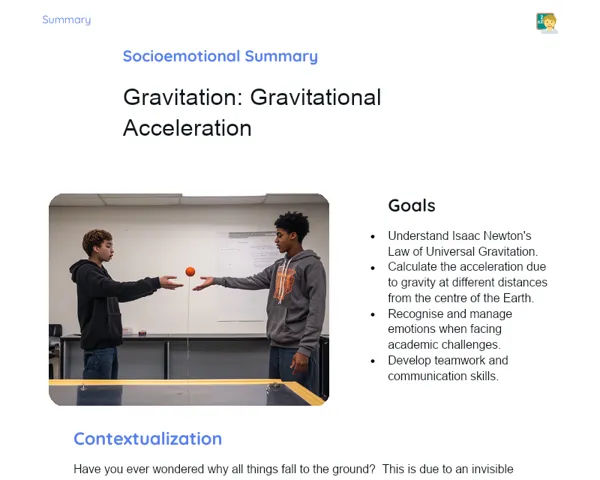Goals
1. Grasp that for a rigid body to be stationary, the total forces and moments acting on it need to equal zero.
2. Tackle static problems and identify the forces at play on the major components.
3. Use the principles of statics in practical situations we encounter daily.
4. Cultivate analytical and problem-solving skills.
Contextualization
Think about the high-rise buildings or the pedestrian bridge you use every day. Have you ever taken a moment to consider how these structures stand strong and bear weight without collapsing? The secret lies in the principles of statics of rigid bodies, a branch of physics focused on understanding the balance of forces and moments in structures that remain intact. Mastering these principles is key to safeguarding the very infrastructure around us. For instance, engineers rely on these concepts to assess how forces are distributed in bridges and buildings, ensuring they can handle loads from vehicles, pedestrians, and even tough weather conditions.
Subject Relevance
To Remember!
Force Balance
Force balance occurs when the total forces acting on a rigid body equal zero. This means that all forces neutralize each other, resulting in a state of rest or steady motion. This concept is pivotal in ensuring structures like buildings and bridges remain stable and secure.
-
For a body to be in equilibrium, the vector sum of all acting forces must be zero.
-
Forces come in various kinds: gravitational, normal, frictional, and more.
-
Vector analysis of forces is crucial to determining equilibrium.
Moment Balance
Moment balance occurs when the total moments (torques) acting on a rigid body also equal zero. This means there is no tendency for the body to rotate or tip. This principle is vital in preventing structures from tipping over.
-
A moment is calculated as force multiplied by the perpendicular distance to the pivot point.
-
For moment equilibrium, the total of the moments around any point must be zero.
-
Moment analysis is critical for designing stable structures.
Equilibrium Conditions for a Rigid Body
For a rigid body to maintain static equilibrium, two conditions must be met at the same time: the total of all forces acting on the body must equal zero, and the total of all moments acting on the body must also be zero.
-
Translational Equilibrium Condition: the total of the vector forces must be zero.
-
Rotational Equilibrium Condition: the total of the moments must be zero.
-
These conditions guarantee that the body will neither move nor rotate.
Practical Applications
-
Bridge Construction: Engineers apply the principles of statics to figure out the distribution of forces and moments, ensuring that the bridge can safely carry the weight of vehicles and pedestrians without giving way.
-
Tall Buildings: Architects and engineers use these concepts to ensure that skyscrapers can withstand wind loads and their own weight while keeping stability.
-
Manufacturing Equipment: In industry, machinery is designed with the balance of forces and moments in mind to prevent mechanical failures and guarantee operational safety.
Key Terms
-
Force: An interaction that, when unbalanced, changes the motion state of a body.
-
Moment (Torque): A measure of the force that can produce rotation of an object around a point or axis.
-
Static Equilibrium: The state of a body where the total forces and total moments are zero, resulting in a body at rest or in constant motion.
Questions for Reflections
-
How can we apply the principles of statics to enhance safety in residential buildings?
-
What are the potential risks of neglecting the principles of force and moment balance in engineering designs?
-
In what ways can understanding statics inform the design of new products in manufacturing?
Popsicle Stick Bridge Challenge
Create a bridge using popsicle sticks and glue that can withstand a specific weight.
Instructions
-
Divide into groups of 4 to 5 members.
-
Utilize only popsicle sticks and glue to construct the bridge.
-
The bridge must be at least 30 cm long.
-
The structure must support a weight of 500 grams without collapsing.
-
Plan the forces and moments distribution before starting your build.
-
You have 20 minutes to construct the bridge.
-
Test the bridge by placing the weight in the center and see if it holds.
-
Discuss why some bridges held and others failed, connecting it back to the concepts of force and moment balance.


